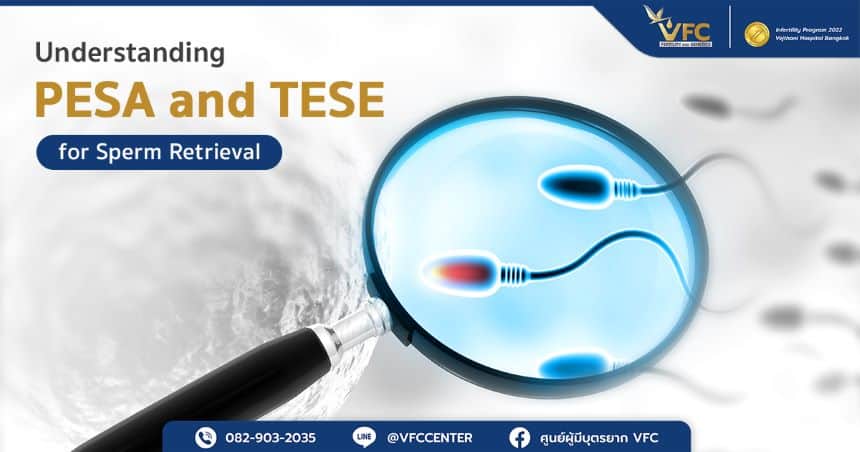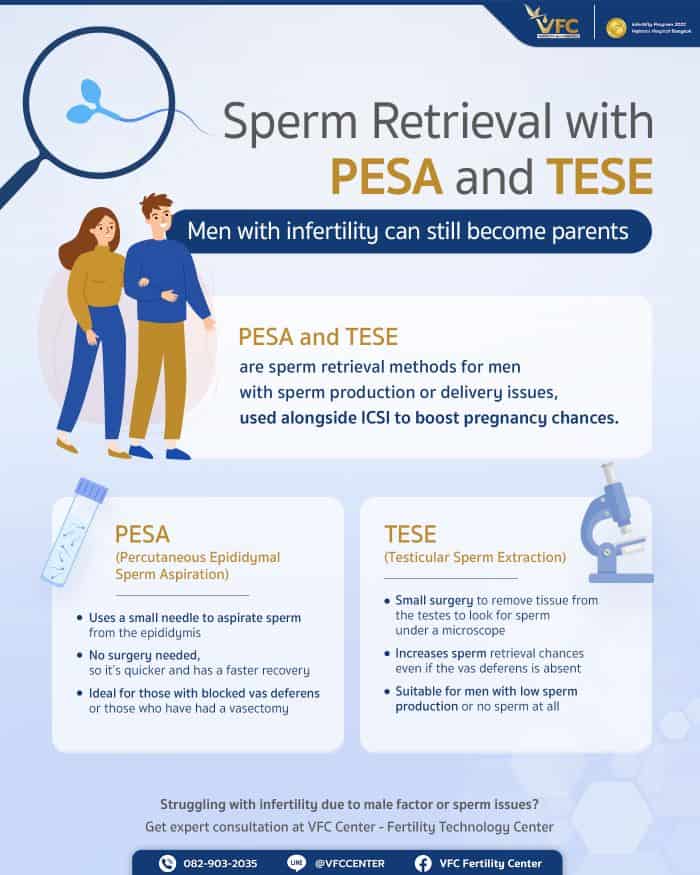
Sperm and eggs are fundamental for fertilization and pregnancy. For men who have no sperm in their semen, don’t lose hope in becoming a parent. Advances in medical technology now offer sperm retrieval directly from the testes or epididymis, as well as semen collection using techniques like PESA and TESE, specifically developed to help men dealing with infertility from conditions such as permanent vasectomy, blockages, or low sperm production. Understanding these sperm retrieval methods is an important first step in your fertility journey.
What Are PESA and TESE? How Do They Differ?
PESA (Percutaneous Epididymal Sperm Aspiration) and TESE (Testicular Sperm Extraction) are medical procedures designed for men who cannot naturally ejaculate sperm or face issues with sperm production or transfer. These methods allow sperm to be collected directly and used for ICSI (Intracytoplasmic Sperm Injection) to increase the chances of pregnancy for couples struggling with infertility.
PESA – Sperm Collection from the Epididymal Duct
PESA involves using a fine needle to puncture the scrotum and access the epididymis, where sperm mature, to retrieve sperm. This is a minimally invasive procedure that does not require a surgical incision or stitches, allowing for a quick recovery. It is ideal for men with epididymal blockages or those who have undergone a vasectomy. The procedure steps are as follows:
- The patient is examined and local anesthesia is administered.
- A small needle is inserted through the scrotum to access the epididymis.
- Sperm is carefully aspirated for analysis.
TESE – Sperm Collection from Testicular Tissue
What is TESE? TESE involves a small surgical incision to extract a small tissue sample from the testicles, where sperm may be present despite the absence of sperm in the epididymis. This method is suitable for men who have no sperm in the epididymis or who suffer from issues like non-existent or low sperm production. The TESE steps are:
- The patient is examined and local anesthesia is applied.
- A small incision is made in the scrotum, and a small sample of testicular tissue is removed.
- The tissue is then examined under a microscope for sperm retrieval.
Key Differences Between PESA and TESE

Who Should Consider PESA and TESE for Sperm Retrieval?
PESA and TESE are suitable for men who:
- Have azoospermia (no sperm in the ejaculate), no vas deferens, or low sperm count.
- Have had a vasectomy but wish to have children.
- Experience blockages or damage to the epididymis, often caused by injury or infection.
- Require sperm for ICSI due to male infertility and cannot retrieve sperm naturally.
What Happens After Sperm Retrieval?
After sperm is retrieved through PESA or TESE, the next steps include:
- Sperm Quality Assessment: The sperm collected will be analyzed for its movement, morphology, and DNA integrity.
- ICSI Procedure: Selected sperm are injected directly into the egg to facilitate fertilization.
- Sperm Freezing: If sufficient healthy sperm are retrieved, they may be frozen for future use in fertility treatments.

Post-Sperm Retrieval Care
After the procedure, men should take care of their health to promote recovery:
- Maintain cleanliness of the genital area to prevent infection.
- Avoid heavy lifting and intense physical activities for 1-2 days.
- Refrain from sexual activity for at least 7 days to ensure proper healing.
- Contact the doctor if there is severe pain, swelling, or redness at the incision site.
- Get plenty of rest and manage stress effectively.
- Avoid smoking and drinking alcohol, as they can affect sperm quality and recovery.
For men facing infertility due to azoospermia or epididymal blockages, PESA and TESE provide viable options for sperm retrieval. These procedures, while minimally invasive in some cases, require careful post-care and sperm quality assessment to optimize the chances of successful fertilization through ICSI. If you and your partner are considering PESA and TESE sperm retrieval, consulting with a fertility specialist can provide valuable insights and help you decide the best approach for your fertility treatment.
Article by Dr.Wanakan Singhasena
Contact or Book a Consultation:
VFC Center – V-Fertility Center
Hotline: 082-903-2035
LINE Official: @vfccenter

OBSTETRICS AND GYNAECOLOGY-REPRODUCTIVE MEDICINE





No Comments
Sorry, the comment form is closed at this time.